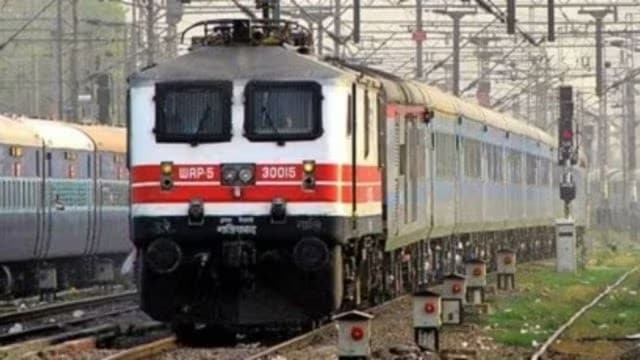With more people travelling by reserved class and a growth in the transportation of commodities — from coal and iron ore to gunny sacks and rice — the Indian Railways witnessed a year-on-year (y-o-y) surge of over 5 per cent in passenger traffic, and an increase of 1.68 per cent in freight loading during financial year 2024-25 (FY25) compared to previous year, according to the data available with the Ministry of Railways.
A total of 715 crore passengers travelled by the Indian Railways between April 1, 2024 ad March 31, 2025. To be sure the total number of passengers is still less than the pre-Covid period of 2019-20, when the total passenger count stood at 808.57 crore. However, it marks an increase of 5.07 per cent compared to 680.54 crore passengers who travelled by the railways during FY24.

The data further shows that out of the total passengers in FY25, a total of 81 crore traveled by reserved category, including AC and sleeper class passengers, and 634 crore were unreserved class passengers. This included suburban travel, which constitutes over 55 per cent of the Indian Railways’ total passengers.
Story continues below this ad
Similarly, the Indian Railways achieved over 1,617 million tonnes (MT) of originating freight loading compared to 1,590.68 MT achieved in FY24. This is an increase of 1.68 per cent or 26.70 MT compared to the previous financial year.
Overall, the Indian Railways earned Rs 75,750 crore from the passenger segment in FY25, up 7.15 per cent from Rs 70,693 in FY24. The railways’ FY25 earnings from freight services rose 1.61 per cent to Rs 1.71 lakh crore from a total goods revenue of Rs 1.68 lakh crore in the year-ago period. according to official data.
Commodity-wise freight loading
Coal continues to remain at the top in the Indian Railways’ total freight loading mix with a share of over 50 per cent. Around 822 MT of coal, 89 MT of container, 51 MT of petroleum and almost 50 MT of foodgrain was transported during by the Indian Railways in FY25. Hot rolled coils, ceramic tiles, wall care putty and rice are among the major commodities in domestic container, according to railway ministry data.
When compared to the previous year, the loading for domestic coal grew by 7.4 per cent, whereas loading for domestic container rose 19.72 per cent. Similarly, loading for fertilisers was up 1.25 per cent year on year. Due to a higher loading of coal by the Indian Railways, stock at power houses in India stood at 57 MT.
Story continues below this ad
Zone-wise freight loading
According to official data, out of the 17 zones of the Indian Railways, seven zones loaded over 100 MT of freight during the period under consideration, with the Eastern Railways being a new entrant on the list.
The East Coast Railway continues to remain the leading freight transporter with a share of 259 MT in FY25, closely followed by 253 MT originating freight loading by the South East Central Railway.
South Eastern Railway, which is headquartered in Kolkata, ranked third on the list with total freight loading of 212 MT, while the South Central Railway, headquartered in Telangana’s Secunderabad, is ranked fourth with over 200 MT of freight loading.
For the first time, the Eastern Railway, another zone headquartered in Kolkata with divisions in Howrah, Malda, Sealdah and Asansol, achieved 100 MT freight loading in FY25. Overall, Eastern Railway registered the highest freight loading growth of 16.11 per cent.
Story continues below this ad
This is followed South East Central Railway, which achieved a growth of 7.28 per cent, the Northeast Frontier Railway (4.21 per cent), Northern Railway (3.89 per cent), East Central Railway (2.82 per cent), South Central Railway (2.14 per cent), East Coast Railway (1.19 per cent), Southern Railway (0.80 per cent) and South Eastern Railway (0.36 per cent).

































